
12 thornless or nearly thornless roses
Our selection to adopt in the garden without getting pricked
Contents
Rosesroses are among the essential plants for gardens. They offer an incredible diversity of colours, flower shapes, flowering periods, silhouettes, and uses, catering to all tastes.
While we generally envision their flowers as roses with thorny stems, did you know that there are varieties with few or no prickles, also known as inermous? The advantage of these roses is that they can be safely grown near pathways, in small spaces, or in pots, and their maintenance is greatly simplified.
Bush roses, climbing roses, and nearly thornless liana roses: here is our selection of 12 varieties full of qualities to discover.
Thornless shrub roses
Landscape shrub roses are generally easy to grow and require little maintenance. Vigorous, disease-resistant, and modest in size, rarely exceeding 2 metres, they fit into almost all types of gardens.
‘Kew Gardens’, an abundant flowering in dog rose
The David Austin rose ‘Kew Gardens’ is a large bush appreciated for its many qualities. Its repeat flowering floods the summer and early autumn, almost without interruption, with dog rose flowers. They are adorned with pure white, enhanced by a lemon yellow centre and a nest of golden stamens.
The bush offers an upright silhouette, completely thornless, reaching 1.5 metres in height and 1 metre in spread at maturity.
Vigorous, with healthy foliage resistant to diseases and quite hardy, it will find its place in the background of a flowering bed or in a landscape hedge.
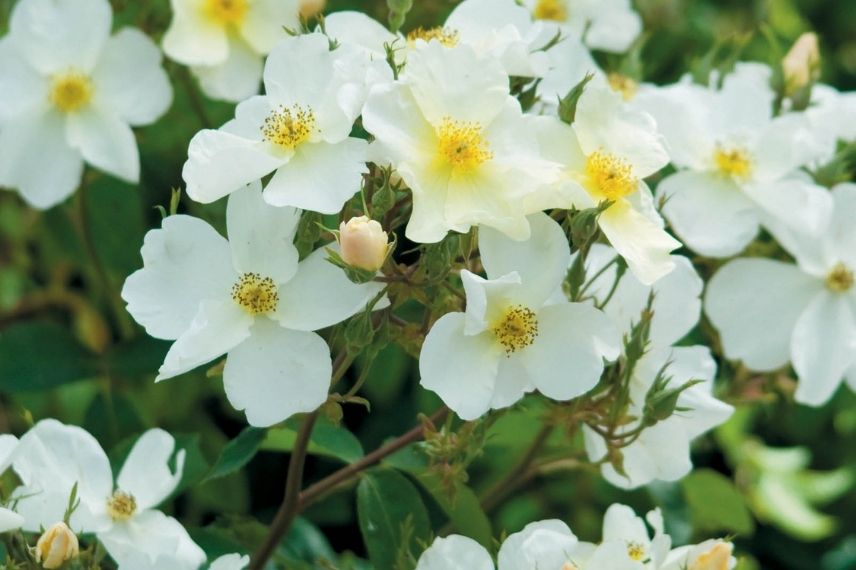
Rose ‘Kew Gardens’
‘Reine des Violettes’, a timeless old rose
‘Reine des Violettes’ possesses the old-fashioned charm of antique roses, combined with an extraordinary changing colour. The large flowers reveal themselves at the end of spring (May-June), and sometimes again at the end of summer (September-October), if conditions are favourable. They are well-formed in tight quarters and display a purplish-red colour nuanced with red at their centre, evolving to a lighter lavender.
In terms of fragrance, the scents are floral and very powerful.
The foliage is not to be outdone as it offers, on thornless stems, astonishing bluish-green hues.
This old rose, which thrives in warm climates, proves vigorous and not very susceptible to diseases.
A broad but dense bush, reaching a maximum of 1.5 metres in height and 1 metre in spread, it can be grown in pots, in beds, or in groups of three, to brighten up a well-maintained lawn.

Rose ‘Reine des Violettes’
‘Carolyn Knight’, a small silhouette with original colour
The David Austin rose ‘Carolyn Knight’ offers a flowering in warm tones, blending coppery orange, gold, and pink reflections. From its large flowers of 8 cm in very double cups emanates a sweet scent of honey and almond, further enhancing the warmth of this English variety.
Repeat flowering, this rose blooms tirelessly from summer until the first autumn chills.
This vigorous and healthy bush does not exceed 1.25 metres in height and 1 metre in spread. Almost thornless, it can be placed at the edge, in a flower bed, or in a shrub hedge.

Rose ‘Carolyn Knight’
‘Mrs John Laing’, beautiful bouquet flowers
The old rose ‘Mrs John Laing’ combines abundant flowering and intoxicating fragrance. From June to July, then in September-October, it rewards us with delicate flowers of 10 cm, well-rounded, in a soft pink colour nuanced with silver.
If the flower is widely used in bouquets, it is for its longevity, its powerful almost heady fragrance, and its resistance to the elements.
Its small silhouette does not exceed 1.30 metres in height and 90 cm in spread.
Quite hardy, low-maintenance, resistant to frost and diseases, this rose will acclimatise in many gardens and can even be grown at altitude.
Almost thornless, it will shine in a large pot on the terrace or near the entrance of the house, to make the most of its fragrances.
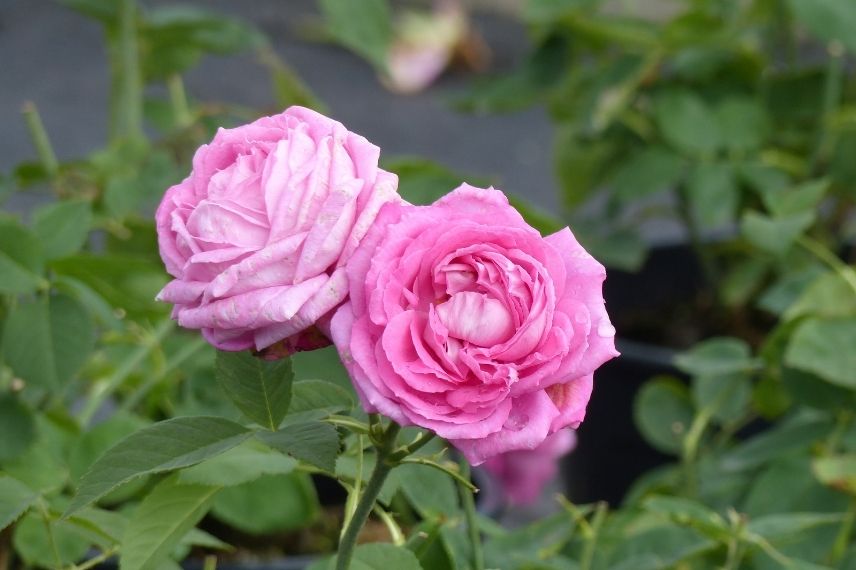
Rose ‘Mrs John Laing’
Climbing roses without thorns
Climbing roses bring a lot of verticality to the garden with their long, flexible stems that ascend various structures (trellis, arch, gazebo, pergola…). Often fragrant and repeat flowering (blooming multiple times a year), some varieties also offer thornless roses.
‘Zéphirine Drouhin’, a charming old variety
The climbing rose ‘Zéphirine Drouhin’ boasts beautiful double flowers of 7 cm in a vibrant, dynamic pink from June to October, sometimes leaning towards light red. They exude a powerful fruity fragrance of raspberry or blackcurrant.
Its flexible bushy silhouette reaches 3 metres in height and 2 metres in spread. It is either thornless or very lightly thorned.
The stems of this climber should be trained on a trellis along a fence or wall. Very hardy (down to -15°C), this rose will even adapt to gardens in montane climates.
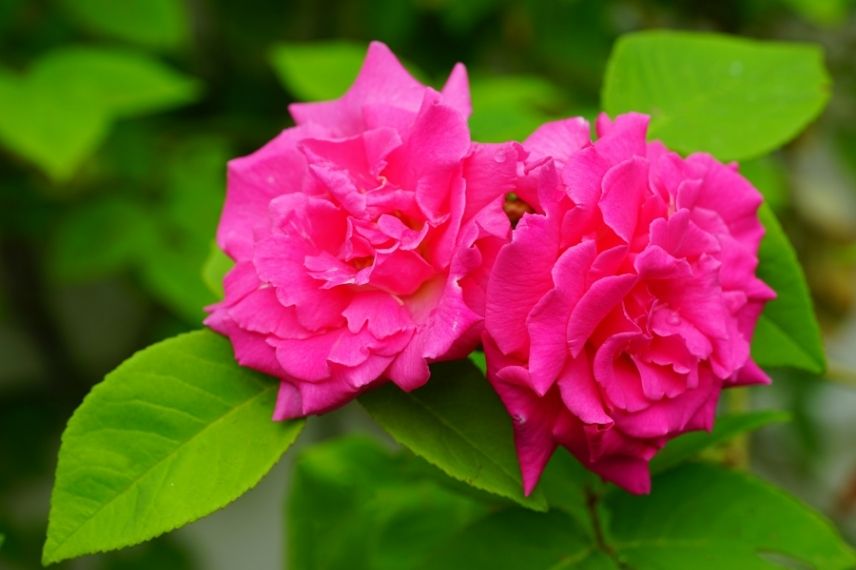
Rose ‘Zéphirine Drouhin’
‘Madame Alfred Carrière’, a rose renowned for its many qualities
The climbing rose ‘Madame Alfred Carrière’ has received numerous awards, a testament to its qualities: vigour, disease and cold resistance, floribundity, and almost thornless.
From June until the first frosts, it offers bouquets of large double flowers of 10 cm, in ivory white enhanced by a delicate heart with rosy reflections. The flowers reveal a pleasant and intense fruity fragrance.
This rose reaches nearly 4 metres in height and 2 metres in spread and will easily adorn gates, fences, or pergolas. It can be grown even in poor soils and shaded areas, where it will bring light and lushness.
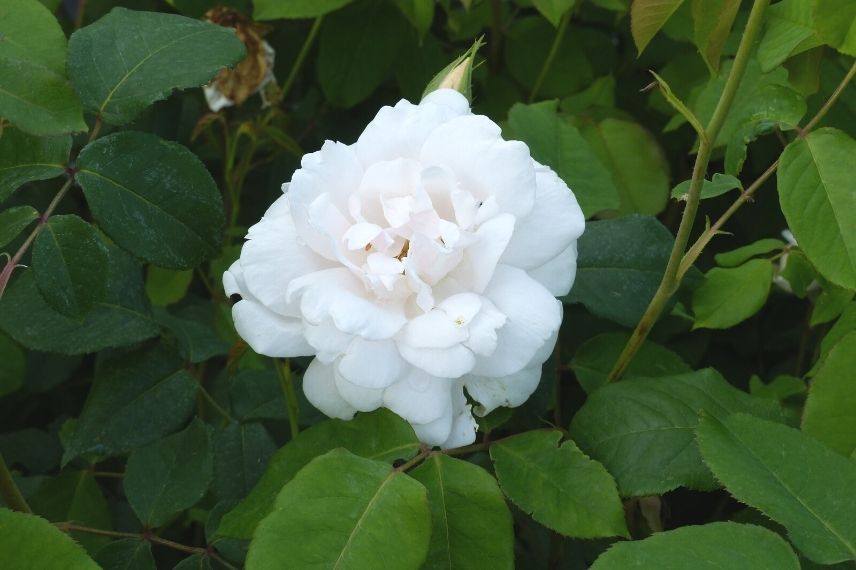
Rose ‘Mme Alfred Carrière’
‘Malvern Hills’, a sunny variety
The David Austin rose ‘Malvern Hills’ is a true cascade of brightness: all summer and until the first frosts, it is adorned with clusters of small double flowers in a very warm coppery yellow that fades over time. They offer a delightful sweet and musky fragrance.
Vigorous, its lightly thorned stems reaching over 3 metres in height are covered with elegant semi-evergreen foliage (retained in mild climates), which will dress up pergolas, gazebos, or fences.
This rose is ideal for large spaces and can also add a wild and natural touch to a flower bed.

Rose ‘Malvern Hills’
‘Snow Goose’, adorable immaculate pompons
The David Austin rose ‘Snow Goose’ is covered from summer to autumn with charming small double flowers that have a tousled appearance, reminiscent of daisies. They are a delicate white opening to a small cream eye, and exude musky notes.
This English rose proves to be disease-resistant, very hardy, vigorous, and easy to maintain thanks to its lightly thorned stems.
It can reach up to 3 metres in height and 1 metre in spread and will be a perfect candidate for greening a pillar or enhancing a fence or trellis.
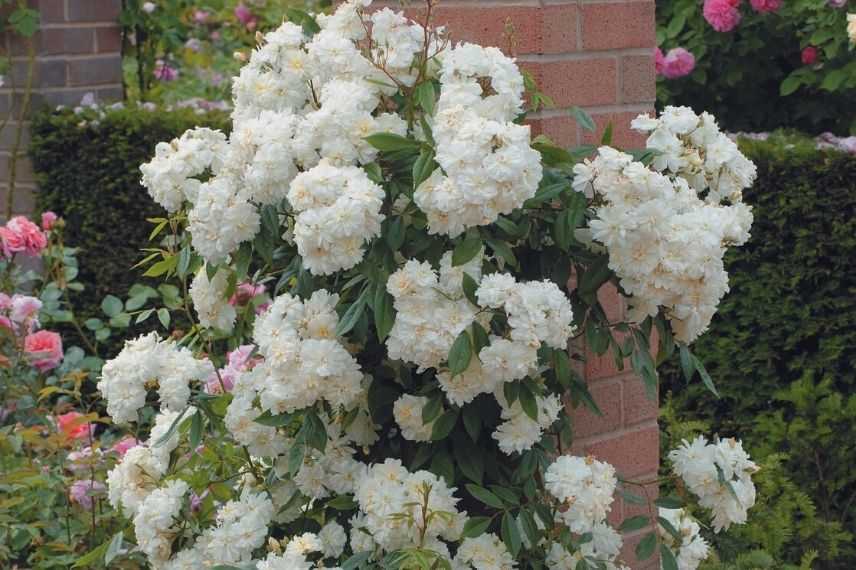
Rose ‘Snow Goose’
‘Mortimer Sackler’, the romantic touch
Another must-have English rose in this selection of thornless climbers: the David Austin rose ‘Mortimer Sackler climbing’ offers us beautiful flowers of about ten centimetres, revealing a typical old rose fragrance, rich and fruity. They are well-formed, double, and a fresh pink colour that fades towards the edges. The flowering occurs almost continuously from June to October.
The long stems of this rose, which can exceed 3 metres in height, bear few thorns, making maintenance easier and allowing it to be placed even close to passage areas: on the terrace, under an arch or pergola at the entrance, or to dress up a garden shed.
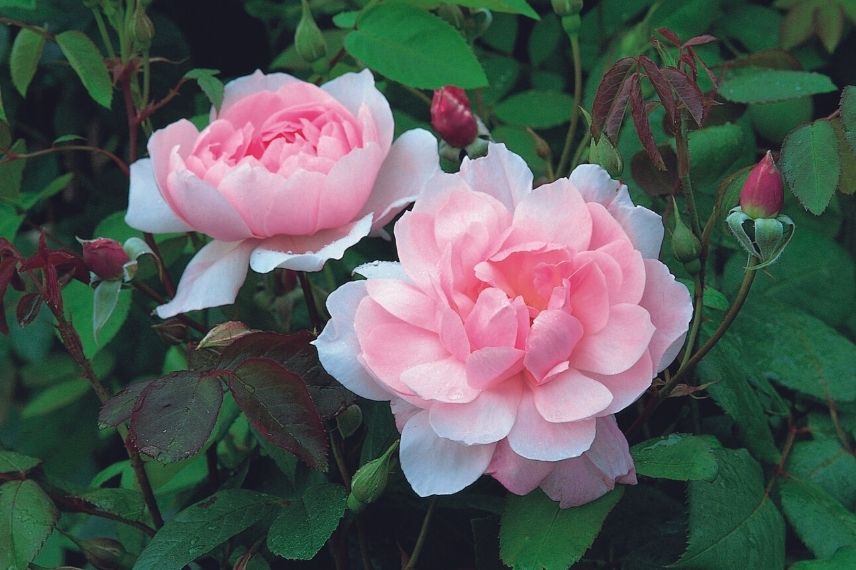 Rose ‘Mortimer Sackler'[/caption>
Rose ‘Mortimer Sackler'[/caption>
Discover other Thornless Roses
View all →Available in 0 sizes
Available in 1 sizes
Available in 1 sizes
Available in 1 sizes
Available in 1 sizes
Available in 1 sizes
Available in 1 sizes
Available in 1 sizes
Available in 2 sizes
Available in 1 sizes
Thornless climbing roses
Bigger than climbing roses, generally non-repeat flowering (they bloom abundantly only once a year) but very floribundus, the rambling roses also offer us beautiful varieties of thornless roses.
Rosa banksiae ‘Lutea’, impressive dimensions
The Banks rose ‘Lutea’ is a large thornless liana that can exceed 10 metres in height and 6 metres in spread. It blooms early for nearly 3 weeks in spring, between March and June. This liana then reveals a fountain of thousands of small double roses, with an unusual buttery yellow colour, very soft.
Its foliage, which is not very susceptible to diseases, is evergreen in mild winter climates.
Hardy down to -10°C, it thrives in Mediterranean climates, even dry ones, and in regions south of the Loire.
Particularly vigorous, it will take only 4 or 5 years to cover a pergola or climb an old tree.
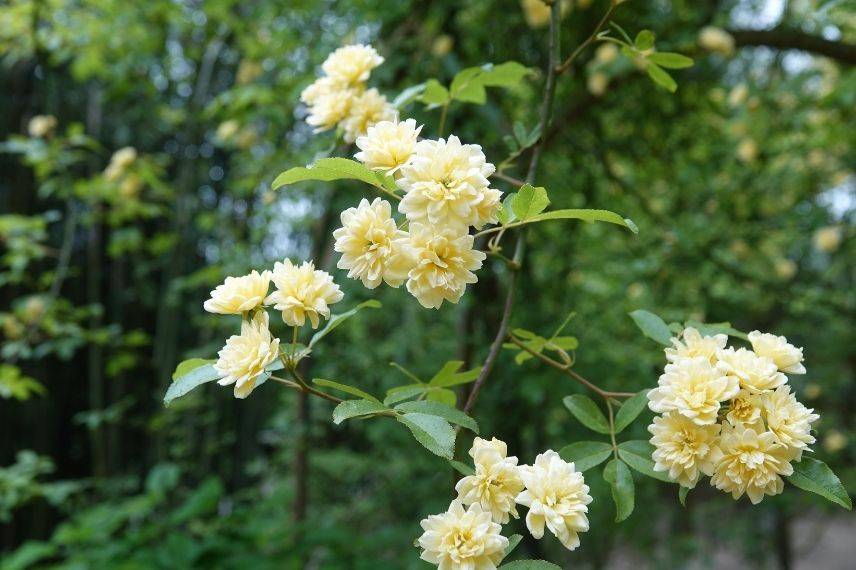
Banks rose ‘Lutea’
‘Veilchenblau’, an incredible colour
The ‘Veilchenblau’ rose is a German variety that cannot be overlooked. It catches the eye with its vibrant colours that evolve over the days: a purple-violet that takes on rare bluish hues as it fades, highlighted by a white centre and a nest of golden stamens. Flowering occurs between June and July, and the semi-double roses reveal a light powdery fragrance, which intensifies in warm, calm weather.
Easy to care for and robust, it is almost thornless, adapting to all climates and soils.
Its silhouette reaches up to 5 metres in height and 3 metres in spread. It will beautifully illuminate shaded areas of the garden or hide unsightly structures.
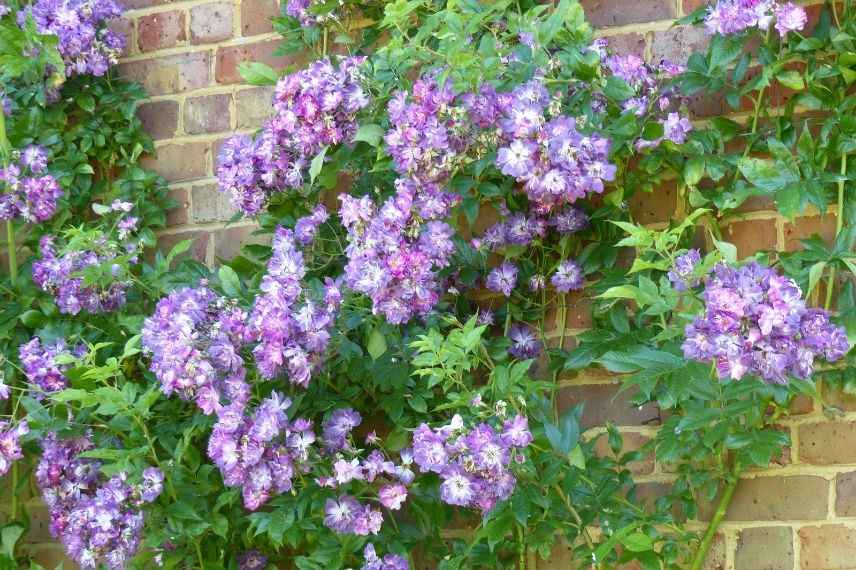
‘Veilchenblau’ rose
‘Maria Lisa’, a wild and vibrant touch
The liana rose ‘Maria Lisa’ is a beautiful summer-flowering liana. Between June and July, it produces bouquets of semi-double flowers in a sparkling bright pink, illuminated by a white eye and a heart of golden stamens.
Strong, vigorous, and not very susceptible to diseases, it has many qualities.
Ideal for greening large spaces, this slightly trailing liana rose has modest dimensions (4 metres in height and 3 metres in spread) and is almost thornless.
It can be trained along a wall, climb an old tree, or integrate into a large free hedge, even in semi-shaded conditions.
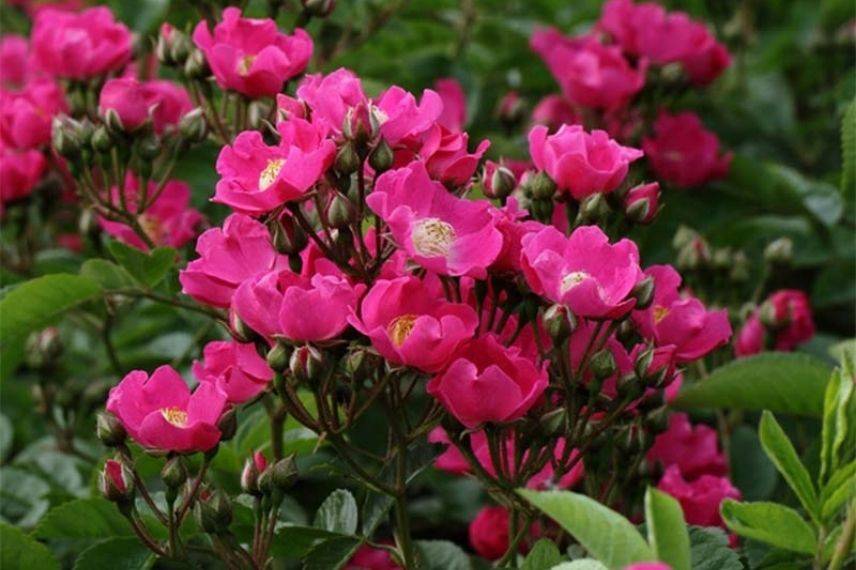
‘Maria Lisa’ rose
- Subscribe!
- Contents
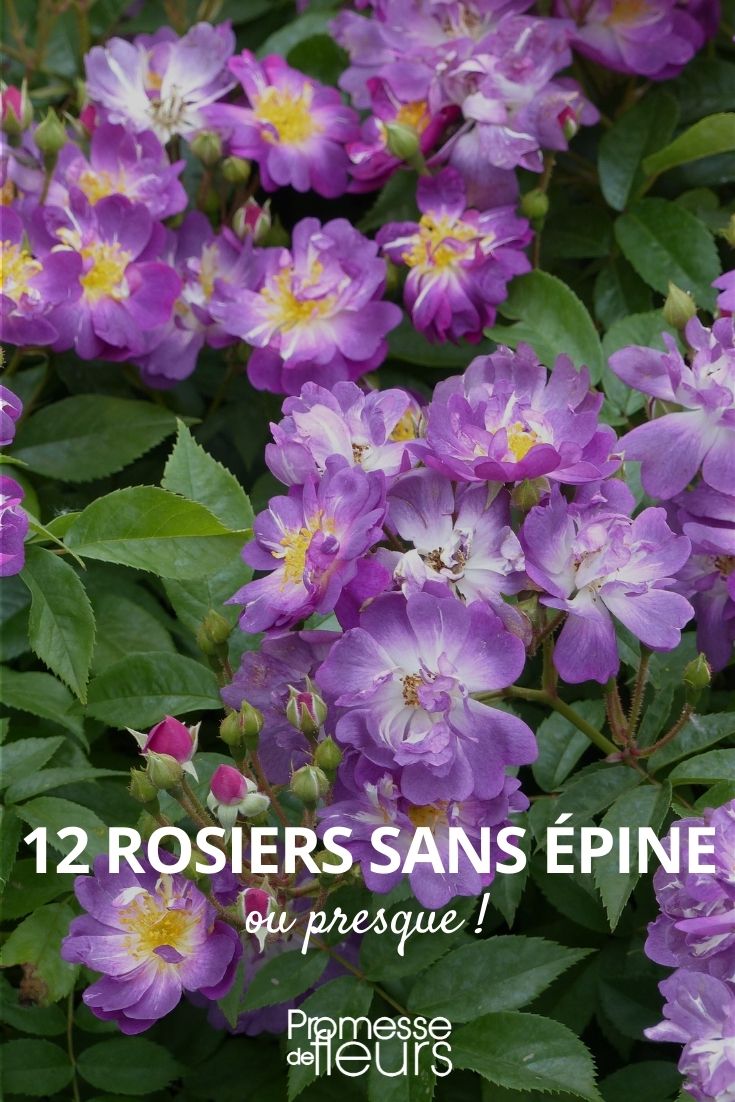
































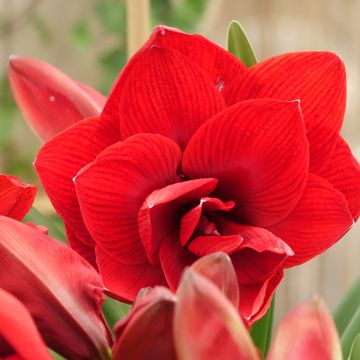
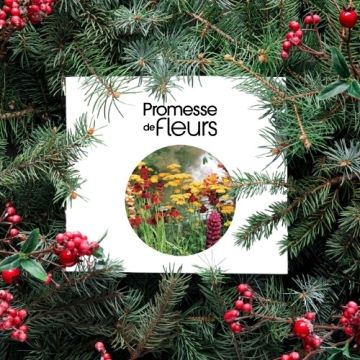

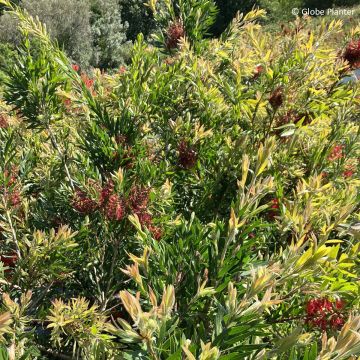
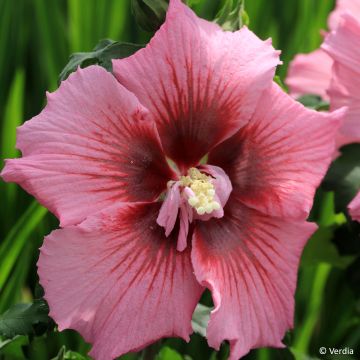
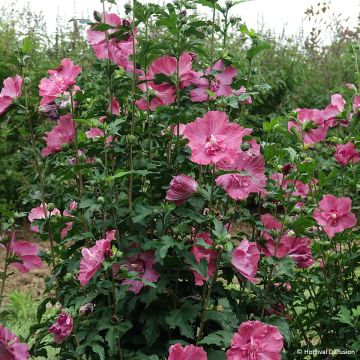

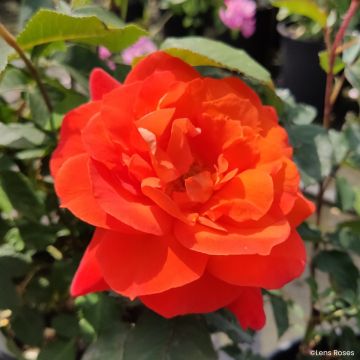

Comments